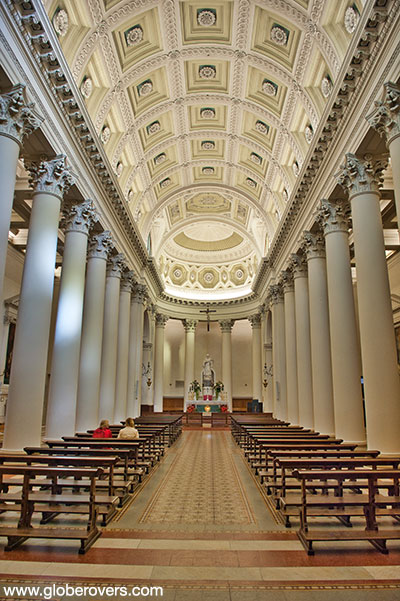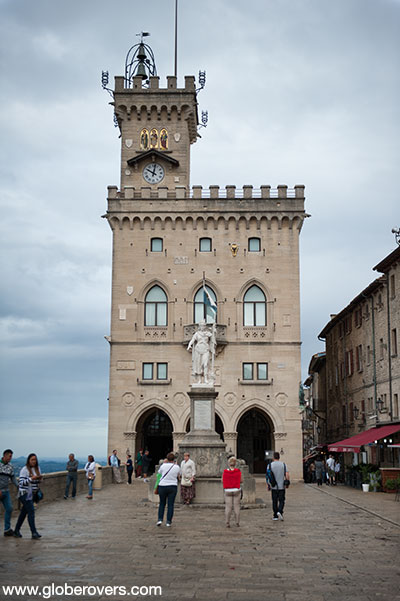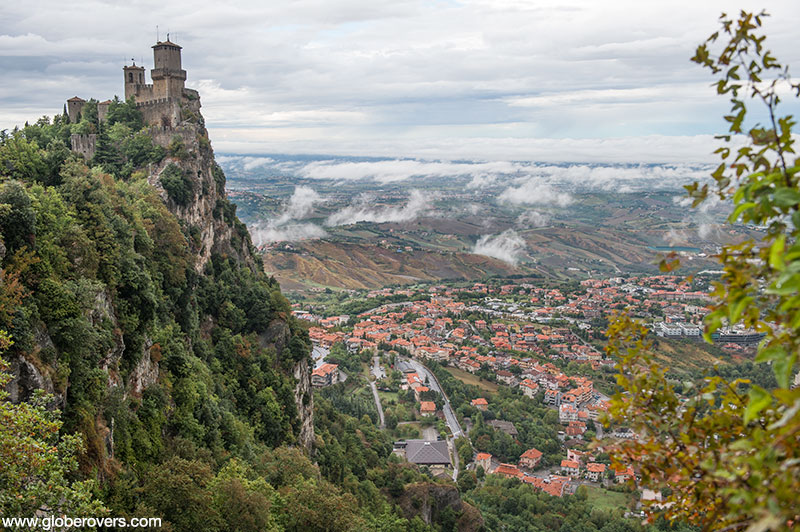
Entirely surrounded by Italy, the Republic of San Marino is located on the Italian Peninsula at the northeastern side of the Apennine Mountains. With a total population of just over 33,000, it is Europe’s least populated country.
According to legend, in 257 AD a stonemason named Marinus (later known as Saint Marinus) was involved in the reconstruction of a city’s walls in the nearby Italian town of Rimini, when he got sidetracked and founded the monastic community on Mount Titano in the nearby mountains, on the highest peak in what is now known as San Marino City.
San Marino – a small republic with few people, three famous towers, and many museums!
According to another story, Marinus and a group of Christians settled on Mount Titano to escape persecution.
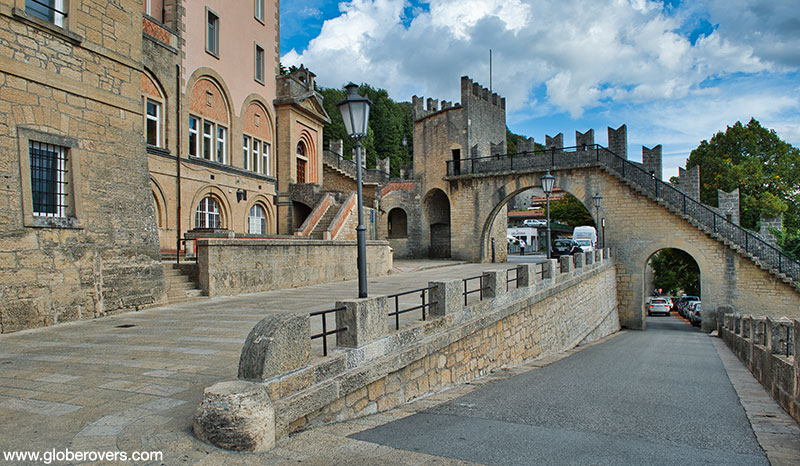
By the 12th century, San Marino had developed into a commune ruled by its own statutes. It remained unconquered largely due to its isolation and mountain fortresses. When Napoleon invaded Italy in 1797, he respected the sovereignty of the tiny republic. Its next protector was Giuseppe Garibaldi.
During the 19th-century push for Italian unification, San Marino offered asylum to revolutionaries, among them Giuseppe. After Italy became a national state, San Marino was left untouched, thanks to Giuseppe!
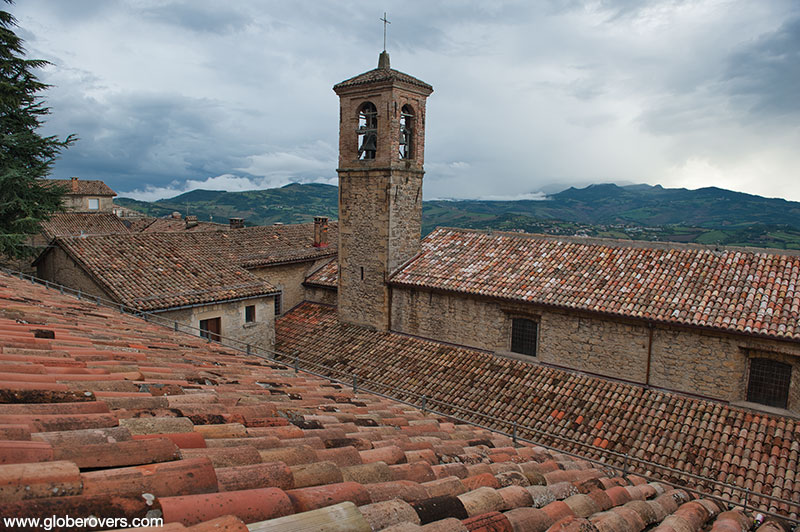
Germany and the Allies both briefly occupied San Marino during World War II, and it remained fairly unscathed.
While the capital is the City of San Marino, its largest city is Serravalle. However, it is San Marino at the top of Mount Titano that gets the attention of visitors.
Known as the “Most Serene Republic of San Marino”, this enclaved microstate is perched on a rock and surrounded by Italy.
The most iconic features of the city are its three fortresses: Guaita (Tower 1), Cesta (Tower 2), and Montale (Tower 3). More commonly referred to as the three towers of San Marino, each is located on a different peak of Mount Titano.
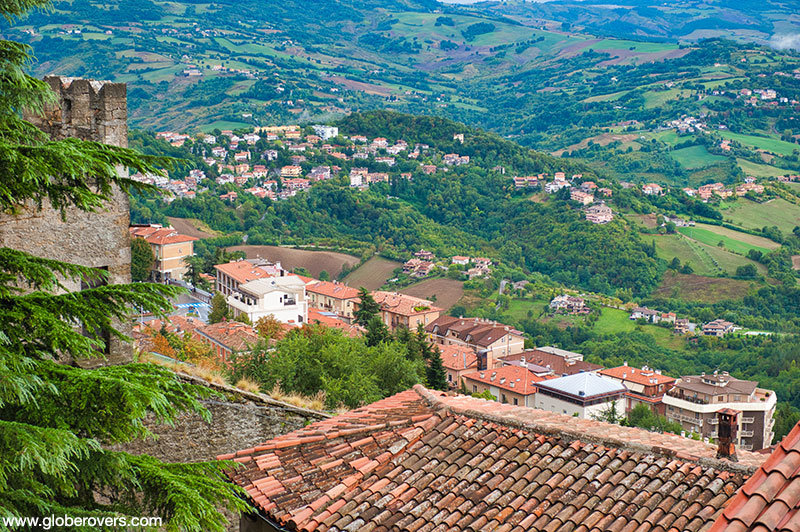
Guaita tower, first constructed in the 11th century, is the oldest of the three towers, and the most photographed. Its current form dates back to the 15th century.
The 13th century Cesta tower is located on the highest of Mount Titano’s three peaks and currently houses a weapons museum to honour Saint Marinus.
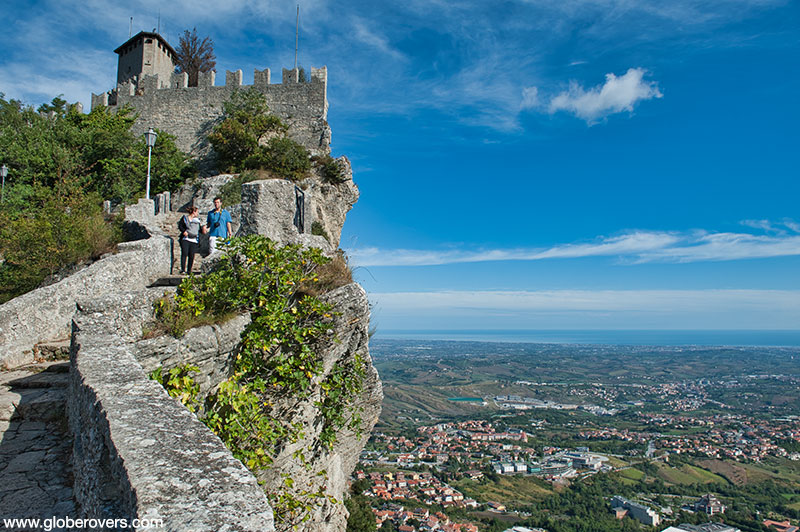
Located on the lowest of Mount Titano’s peaks, is Montale tower. Constructed in the 14th century, this tower is closed to visitors, while the other two are open. A possible reason why it is closed is because its door is about seven metres above ground level. It was once used as a prison, and high entrance doors were common designs.

Basilica del Santo Marino 
Palazzo Pubblico
Other than the photogenic towers and the panoramic views, San Marino City has much more to offer.
Government House (Palazzo Pubblico) is where you can meet the guards dressed in their green and maroon uniforms, holding their guns with long bayonets. The 19th century Neo-classical Basilica di San Marino is impressive.
☛ Read more: Europe’s 10 Lilliputian Countries
Among the many museums in this tiny city are the Coin and Stamp Museum, Museum of Modern Weapons, Vintage Car Museum, Museum of Curiosities, Wax Museum, and more!
Get to know your San Marino
- San Marino is the 3rd smallest country (by area) in Europe.
- Land area: 61.2 km².
- Population: 33,196 (14% foreigners).
- Tourist arrivals: 78,000 (2017).
- Capital: San Marino.
- Neighbouring countries: Landlocked by Italy.
- Known for being built on top of a mountain with an imposing fortress tower on each of
three summits. - San Marino has one of the smallest military forces in the world and still maintains a crossbow corps.
- A great
source of government income comes from the sale of historic coins and stamps.

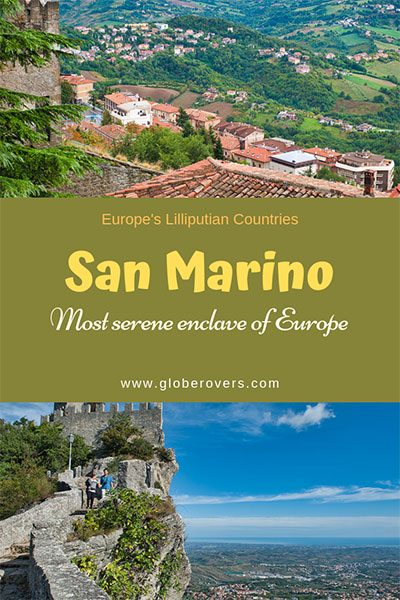

Blog post and photos by Peter who has been travelling almost full-time since 2005 and has been to over 122 countries. He visited several countries, such as Japan, more than 20 times. Peter is Editor-in-Chief and Publisher of GlobeRovers Magazine, an independent travel magazine focused on intrepid destinations.

